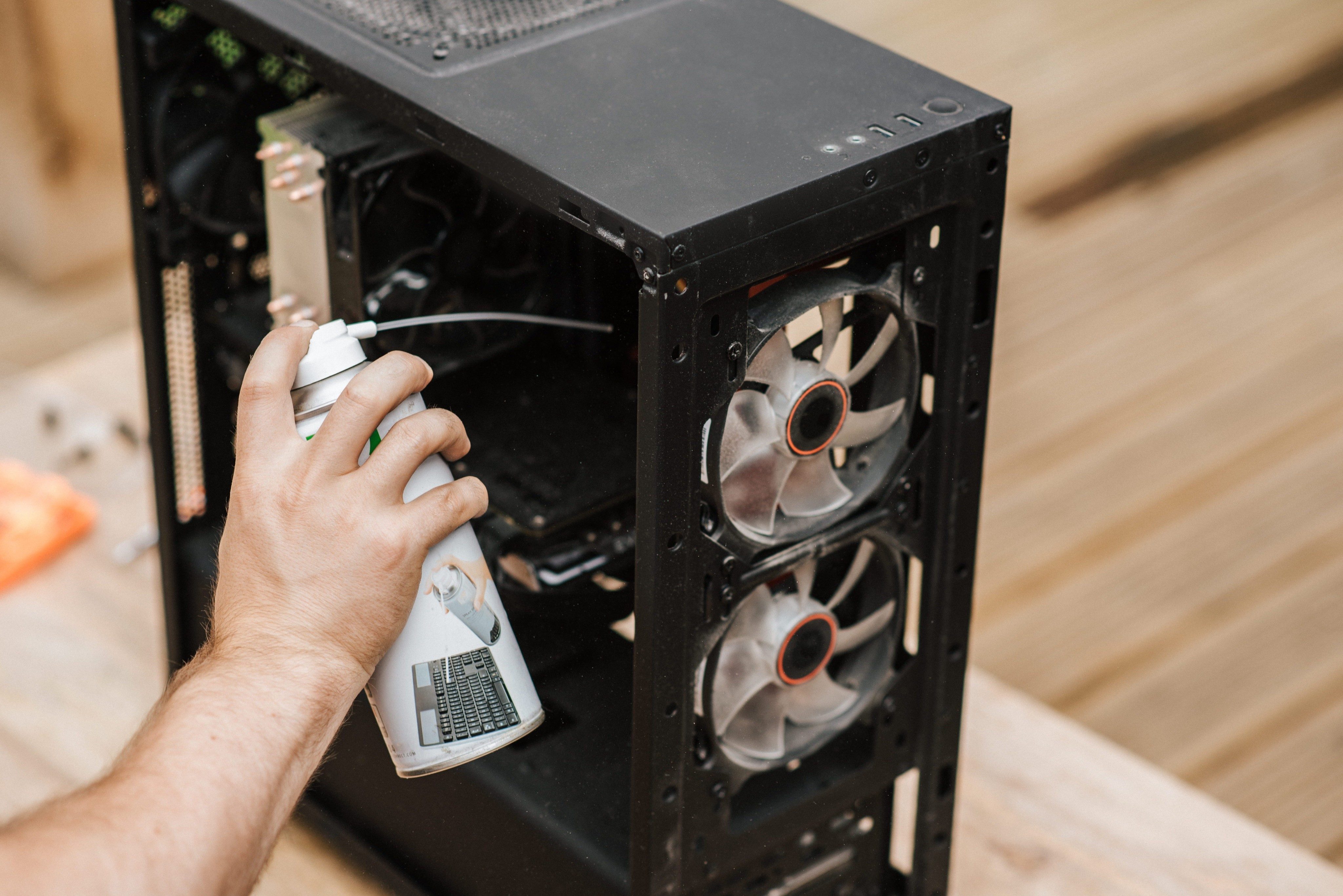We are helping you tackle a technology to-do list that will help you be more productive, organised and secure in 2022.
This time we cover off cleaning your computer and answer just how often you should do it.
How Often Should You Clean Your PC?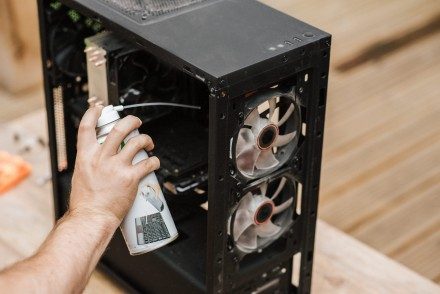
To keep your PC and running smoothly, give the case, monitor, keyboard and mouse a clean on a regular basis.
It’s a good practice to open up your computer (assuming you aren't using a laptop, in which case it's best to avoid opening the case) and follow a cleaning process at least every three to six months.
If you notice that your system has a significant level of dust and hair present the first time you clean it, more frequent cleaning is in
definitely in order, especially if you have some tech sup'paw't interns like Boo
& Skie running about.
How Do You Maintain a Healthy Computer?
Heat is your computer's worst enemy. Not only do we have to combat Australia's tropical climate with air conditioning, over time dust
builds up inside your computer which can then undermine its cooling efficiency, resulting in shorter life spans for your computer's
components not to mention the build up of bacteria, mould, and dust cause everything from allergies to asthma regular cleaning of computer
will significantly lower the potential for sickness.
Creepy crawlies and pests can also infiltrate electronic equipment, just check out this printer we encountered at a clients office recently.

Regular pest control of your office or home environment can also go a long way in protecting your technology.
Deep cleaning your computer
To give your computer a thorough cleaning, first, turn off and unplug the power, and disconnect peripherals such as monitors,
keyboards and mice
Next, open the computer’s case.
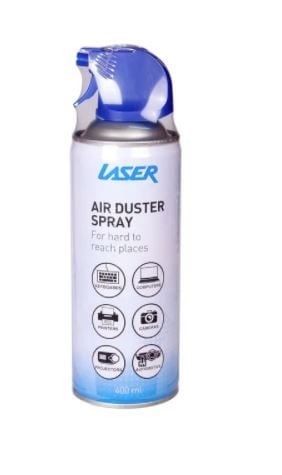
Your most useful tool will be a can of compressed air (you can pick it up at places like Officeworks or Bunnings), to dislodge dust on your fans and other internal components. You can also use a soft brush if you have one on hand.
Move your computer to a well-ventilated area, as you may be stirring up a significant amount of dust, we would recommend wearing a mask as well, particularly if you are sensitive to dust.
Using the compressed air or a soft brush remove dust from the most contaminated surfaces first – likely the computer case, CPU, and graphics card fans. To get the fan blades as clean as possible, keep the blades stationary while using the compressed air, this can be done simply by using your fingers to hold it steady.
Continue around the case with the compressed air throughout the case interior. Avoid using a vacuum to remove dust from your computer,
especially the interior. Not only can vacuums build up static and potentially damage the electronics, you could also accidentally knock a
component and break it.
Once you have the dust and grime out of the case pop the side back on and you can then move onto the exterior components, which
we will cover next.
Cleaning a Keyboard
Even if it doesn’t look like it, your keyboard can harbour a lot of dirt, let's face it who hasn't sat infront of their computer eating a
bag of Twisties during a mid-afternoon slump.
Some keyboards on the market are constructed and sold as being dishwasher safe. If yours is in that category, take advantage and toss it in the dishwasher periodically to clean and sanitise it (make sure to follow manufacturer instructions first).
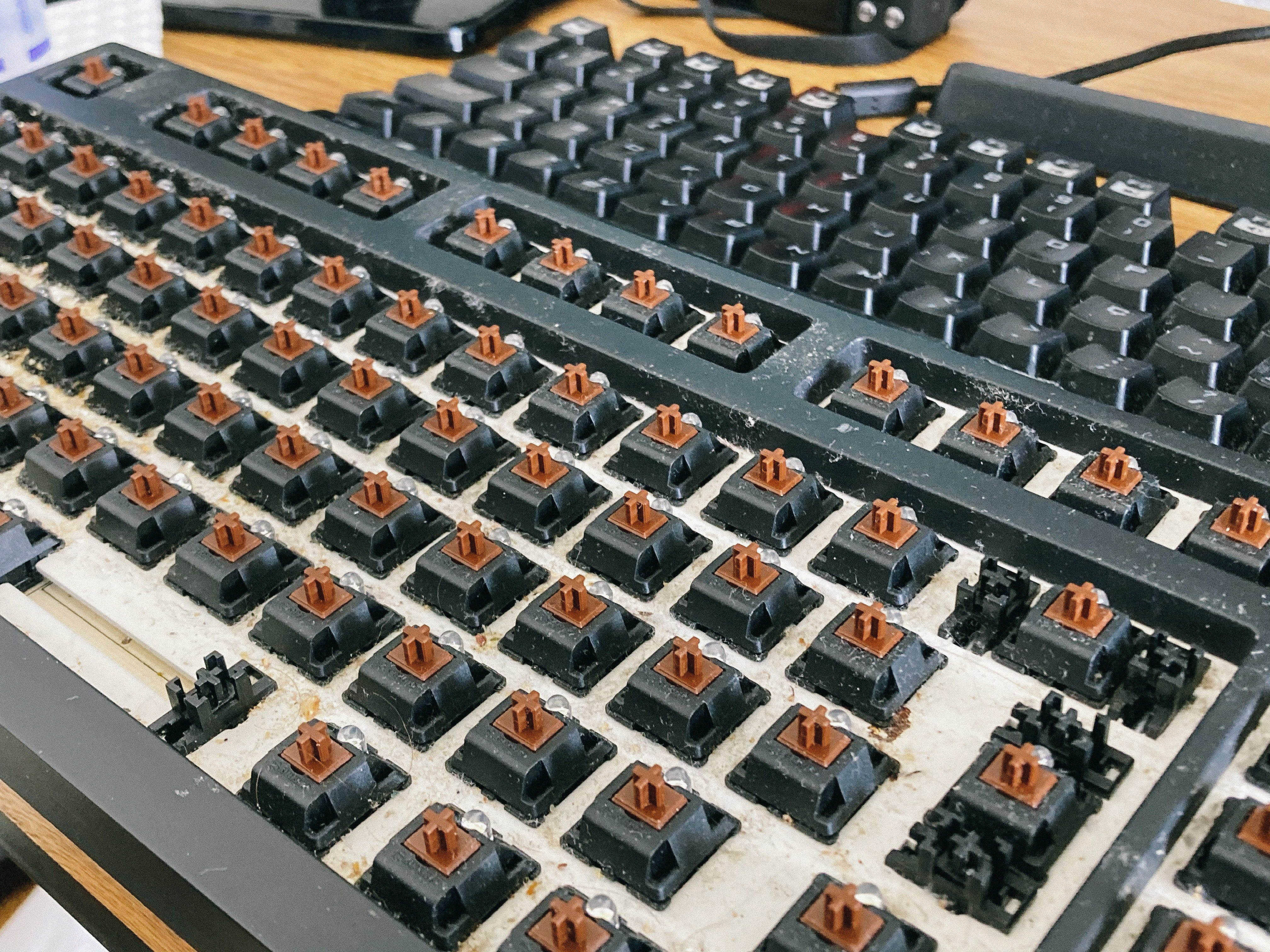
Most keyboards are not so easily cleaned, and require regular attention to keep them sanitary, working properly, and – well – not gross.
Cleaning your keyboard is not difficult, although spills of coffee and sugary drinks may be the exception.
What you need:
- compressed air
- microfiber cloth
- isopropyl alcohol
- cotton swabs
For spills, you may also need a small slotted screwdriver or thin blade, to remove key caps.
How to clean the keyboard
Your first step is to unplug the keyboard from your computer (if you haven't already done so from cleaning your computer above) or turn
off your computer if you are working with a laptop or wireless keyboard.
Next, turn the keyboard upside down, and give it a few solid shakes (if your computer is a laptop, shake gently). This should remove larger particles or crumbs that may be stuck in there
Use the compressed air to blow stubborn debris from between the keys, keeping the nozzle at least 5cm from the keys. Spray from different
angles to free all the particles you can dislodge easily. Once you’ve sprayed the keys, repeat the shaking process with the keyboard turned
over.
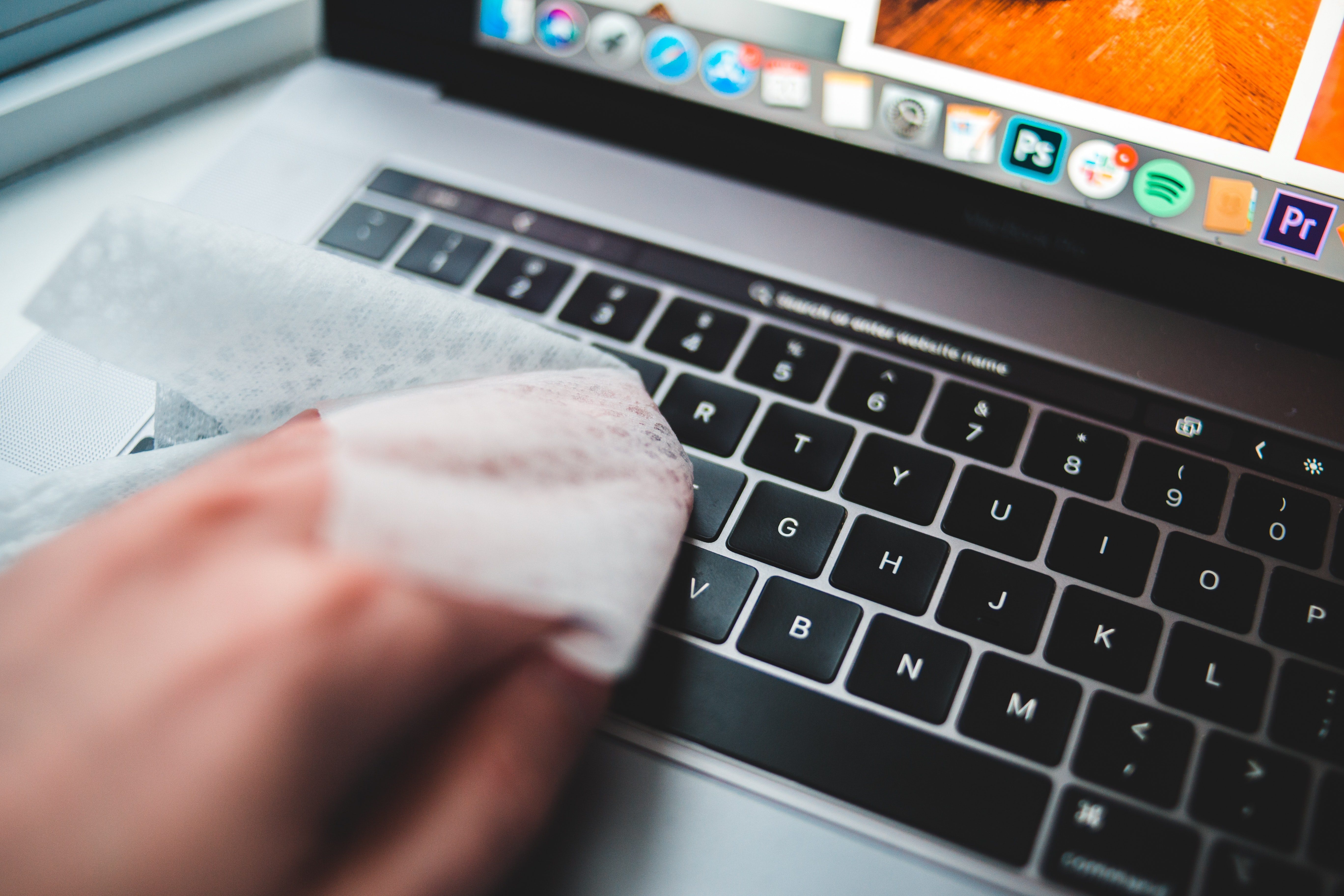
If there are still dust lingering around try using a soft brush to dislodge it.
If your keys have considerable build-up that requires more thorough cleaning, use cotton swabs dampened (not soaked) with isopropyl alcohol to clean around each key.
For a deep clean of a mechanical keyboard, remove key caps by gently prying them up with a small screwdriver or thin blade (Pro
Tip: take a picture of the keyboard first, so that you know where the keys go).
Soak them in a mixture of water and a mild detergent such as dishwashing liquid. You can then wipe them clean with a cloth, and lay them out
to air dry. Be certain they are completely dry before pushing each key gently back in place.
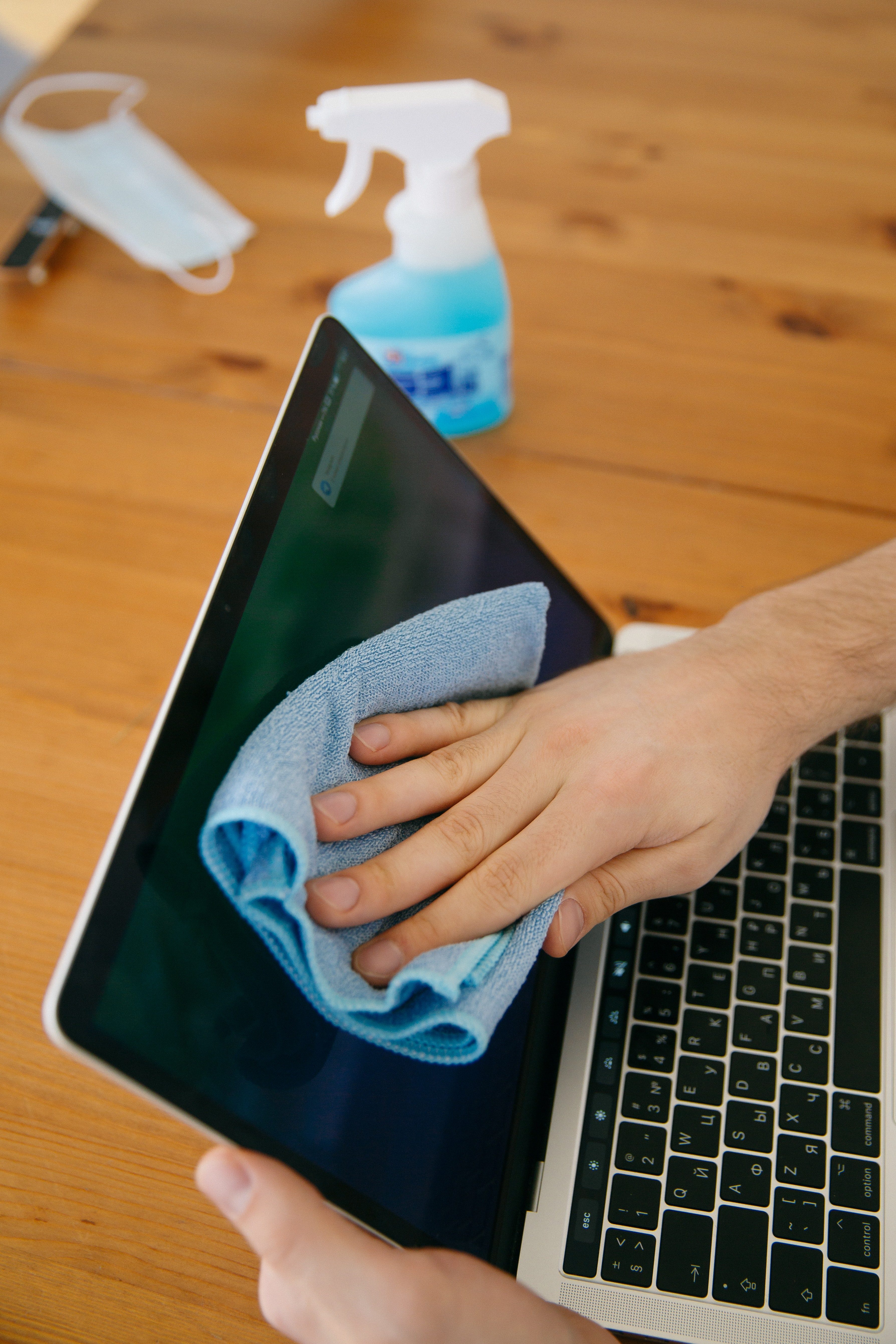
How to clean your monitor
First, be sure NOT to use abrasive cloths such as paper towels to do the job.
They can do more damage than good. Also never use alcohol or ammonia-based solutions to clean your monitor or LCD television.
Instead, you can follow these steps to clean your monitor or laptop screen:
First, turn off your laptop if that is your device or unplug your monitor from the computer.
Using a soft clean cloth, lightly brush the screen from side to side, top to bottom.
Avoid circular, swirling motions. A clean microfiber cloth is the best choice for giving your screen a good dusting and removing such distractions as smudges or fingerprints.
For more stubborn grime, make a solution of soap and a very small amount of mild detergent such as dish soap.
Lightly dampen your microfiber cloth and wipe the screen gently, avoiding dripping or saturating the screen. Be certain the screen is thoroughly dry before restarting the monitor or laptop.
As with anything electronic ensure you take extra care when handling and cleaning the device, electronics and liquid definitely don't mix!
Now your cleaning job is done and dusted, you can sit back and enjoy a grime free PC. Don't forget to set a reminder to do it again in 3-6 months time.
